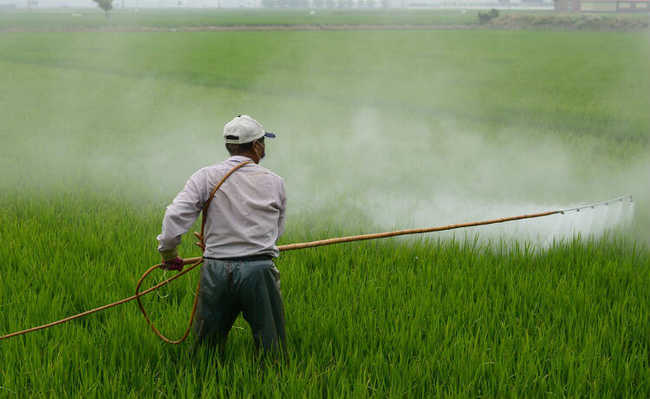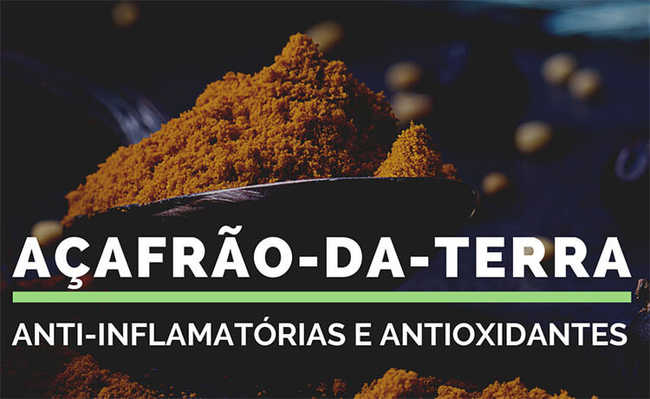Organophosphates: what they are, symptoms of intoxication, impacts and alternatives
Learn more about their uses, how organophosphates work, what symptoms they cause, and alternatives

Organophosphate pesticides are esters, amides or thiol derivatives of phosphorus acids, containing various combinations of carbon, hydrogen, oxygen, phosphorus, sulfur and nitrogen. Highly fat-soluble and biodegradable organic compounds, they are rapidly hydrolyzed both in biological media and in the environment, distributing quickly through organic tissues and overcoming placental and blood-brain barriers.
Organophosphates have been one of the most used pesticide insecticides since the mid-twentieth century, being an alternative to chlorinated hydrocarbons, which persist in the environment. The first organophosphate to be synthesized, in 1854, was tetraethylpyrophosphate (TEEP), and currently there are more than 50 thousand known formulations of organophosphate pesticides - approximately 40 of them are used as insecticides.
Pesticides are chemical or biological products used to exterminate diseases or pests that affect agricultural production. They act to control endemic diseases, such as dengue, yellow fever or Chagas disease.
The use of these products is on the rise in developing countries, as in the case of Brazil, where there was a 162% growth in the use of pesticides in a 12-year period, from 2000 to 2012, which generates a serious problem of public health . It is estimated that millions of farmers are poisoned annually in the world and that more than 20 thousand deaths are caused as a result of exposure to pesticides, leading the National Cancer Institute to take a stand against the use of these substances.
The reasons for the wide use of these compounds as insecticides are their strong biological activity, combined with their instability in the biosphere, which makes them have a short half-life in plants. They are the most used also because of their low cost, easy synthesis and low toxicity for many organisms.
However, in addition to being the most used, organophosphates are also the pesticides that most cause problems to human health. According to the National Toxic-Pharmacological Information System (Sinitox), they are the main cause of poisoning, being responsible for a large number of deaths in Brazil due to acute toxicity.
As an example of the effects on human health, it is possible to mention chlorpyrifos, a neurotoxic insecticide that, when studied in the laboratory, deregulated the thyroid hormones of mice, interfered in the male reproductive system of rats, induced histopathological changes in the testes and led to a decrease in the count of sperm and animal fertility. In humans, it can cause anything from headaches to unconsciousness, and has been associated with an increased risk of leukemia and non-Hodgkin's lymphoma.
Absorption by the human body
Organophosphates are absorbed by the human body through the oral, cutaneous and respiratory routes. After their absorption, they are synthesized and their products are quickly distributed through tissues. Synthesis reactions occur mainly in the liver, forming less toxic and more polar products - it is the body trying to eliminate organophosphates more easily. According to the Agricultural Insurance Organization (OGA), in 2003, the half-life of these compounds after a single administration can vary from minutes to a few hours, depending on the specific compound and the route of absorption.
The synthesis of the compound can take place in order to activate or inactivate it. Inactivation will occur by binding the organophosphate to certain sites in the body or by biochemical modifications. Its elimination occurs mainly through feces or urine. A small part is eliminated unchanged in the urine, while 80 to 90% of what was absorbed is eliminated in 48 hours in an altered form.
Mechanism of action
The mechanism of action of organophosphates is mainly through enzymatic inhibition. The main targets of its toxic action among esterase enzymes are acetylcholinesterase (AChE), in chemical synapses and erythrocyte membranes, and butyrylcholinesterase (BChE) in plasma. Inhibition of AChE leads to accumulation of acetylcholine (ACh) in nerve endings, as it is responsible for hydrolyzing ACh, producing choline and acetate.
ACh is responsible for stimulating postsynaptic receptors, and it must disconnect from the receptor at the end of the stimulus to release it for future stimuli and avoid repetitive and uncontrolled responses after a single stimulus. When intoxication occurs, the AChE esterase centers are inhibited by a covalent bond of the organophosphate pesticide to the cholinesterase enzymes, and its action is stopped. In these cases, there is an accumulation of ACh, generating cholinergic hyperstimulation and the appearance of signs and symptoms triggered by interactions with nicotinic, muscarinic and central nervous system receptors.
The binding between organophosphate and cholinesterases is a process that takes 24 to 48 hours to occur and, during this interval, treatment with an antidote is still effective. As the binding is stable, without specific treatment there is phosphorylation of the enzyme, causing its aging by loss of the alkyl group. After that the affected enzyme no longer regenerates. Once the process is complete, the enzyme can no longer be reactivated and recovery of enzyme activity may take weeks to occur.
Intoxication symptoms
Symptoms will appear quickly or later, depending on the solubility of the organophosphate in the tissues. If absorption of the product occurs through the respiratory tract, symptoms tend to appear within a few minutes; on the other hand, in absorption through the cutaneous or oral routes, symptoms may take a long time to appear. However, if punctual skin exposure occurs, the effects tend to appear in a restricted area, and the reaction is exacerbated if there is skin lesion or dermatitis.
Intoxication by these pesticides has the characteristic clinical picture of cholinergic hyperstimulation, with possible acute, sub-chronic or chronic intoxication (late neurotoxicity).
When acute poisoning occurs, there is a set of symptoms called parasympathomimetic, muscarinic or cholinergic syndrome. Subject's exposure to low levels of the compound is associated with tearing, salivation and involuntary urination/defecation. Higher levels are associated with confusion, ataxia, decreased reflexes, seizures, coma and paralysis in the respiratory center. The evolution of symptoms until death results from respiratory failure, produced by the set of muscarinic actions in the bronchi, nicotine in the motor and central plates. The time between exposure and death can range from five minutes to 24 hours, depending on the route of exposure, dose and other factors. Intoxication is usually treated with anticholinergics (atropine) and AChE regenerators (oximes).
Subchronic intoxication occurs within 24 to 48 hours after exposure and is characterized by weakness of muscles near the extremities, neck flexors, tongue, pharynx and respiratory muscles, impairment of respiratory function, decrease or absence of myotendinous reflexes and nerve involvement cranials.
Chronic intoxication, on the other hand, is attributed to several exposures, involving different substances and doses. There is evidence of onset of symptoms such as personality and psychiatric disorders (psychosis, anxiety, depression, hallucinations and aggressiveness), delayed neurotoxicity (motor nerve paralysis), parkinsonism, decreased reflexes, difficulty concentrating, bone marrow depression and aplastic anemia , with the possibility of developing leukemia.
Damage to the environment
There are many studies on the acute effects caused by organophosphate compounds, but insecticides are not restricted only to these effects, attacking the environment and also causing chronic effects on invertebrates and vertebrates, as a result of long exposures to different organophosphate molecules. These insecticides have two outstanding characteristics: they are more toxic to vertebrates than other insecticides and they are chemically unstable, therefore they degrade in the environment, preventing their absorption by living beings.
Application efficiency estimates report that only about 0.1% of the applied pesticides reach the target pests, while the rest spreads through the environment. The use of this product also causes, to a large extent, contamination of species that do not interfere in the production process that one tries to control (non-target species).
Furthermore, although the half-life of these compounds is not long, there is the possibility that residues and by-products remain in the water at levels relatively harmful to human consumption. Thus, they can be transported by land or air, affecting a larger area and may also contaminate surface and underground water resources used in the supply of drinking water to municipalities. Along with its dispersal ability, this can cause great damage not only to a specific population of animals and plants, but generate an ecological imbalance.
Another problem is contamination by packaging with dregs. The destination of these packages is provided for in Law 9,974 of June 6, 2000 (amendment to Law 7,802/89), which requires users to return the packages to commercial establishments and also makes the producing and marketing companies responsible for collecting and properly disposing of these packages . However, it is verified that approximately 130 million units of pesticide packaging are sold annually and only 10 to 20% are collected and disposed of properly, favoring the contamination of the environment.
Alternatives to avoid consumption
All this information leads us to question whether the problems caused by these pesticides justify their use. An alternative to avoid the consumption of this "poison" is to look for organic foods, which are produced through other agricultural techniques that do not use pesticides, hormones or other chemical products. The techniques used throughout its production process seek to respect the environment and aim at food quality.
If there is no way to buy these foods, other techniques should be used, such as cleaning in a natural way (see our article "Free your food from pesticides in a healthy way"), looking for food within its time period, since for the production of a food at the right time requires less pesticides, and look for products with an identified origin, as this ensures greater commitment from the producer to comply with the standards defined by the National Health Surveillance Agency (Anvisa), obeying the limits determined.
And don't forget: much of the change comes from consumers. Find out about which pesticides are allowed in Brazil and put pressure on the authorities for more restrictive laws for the release of these products and greater supervision to ensure their correct use. In addition to pressing for the use of alternatives such as biopesticides and biostimulants.
Check out the video (in Spanish) about poisoning by organophosphate pesticides produced by the channel "Learning Medicine MED-X".










